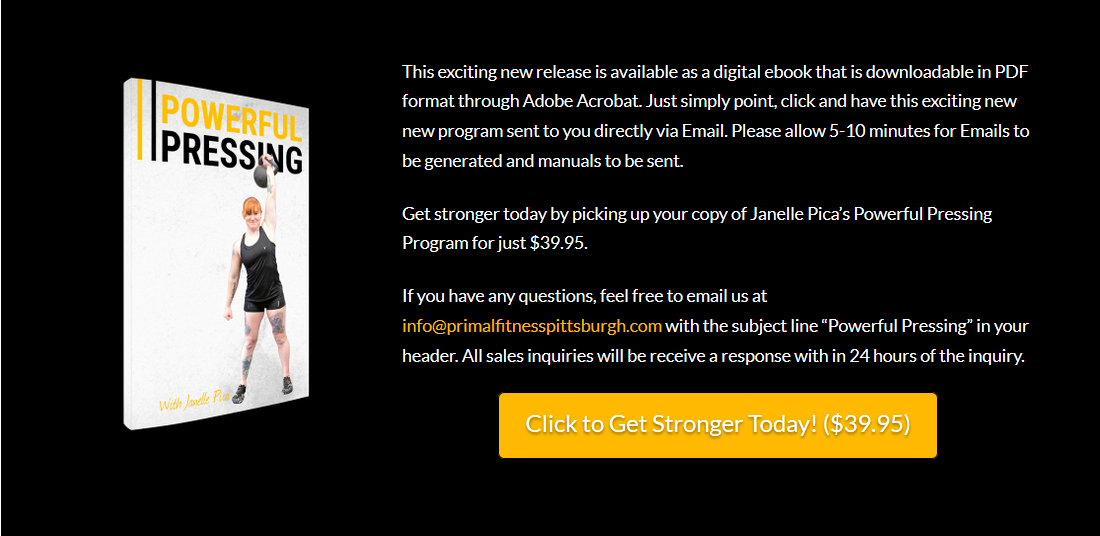Welcome to another ask the instructor blog post! This post is dedicated to the discussion of volume in your training programs and WHY that matters in order to gain serious strength. Over the past few weeks I have been asked about my own take on total work volume and how that plays into the intensity of particular training programs. With our upcoming “Powerful Pressing” manual that is soon to be released, I wanted to take the time today to explain what I personally consider a high volume program and WHY I take a more conservative approach with training for seriously powerful lifts. Without further adieu, lets get down to business 😀

In the world of weight training, the amount of volume you complete in a workout has to do with the total amount of work being done in your training session. When I released the beta test program for the Powerful Pressing Military Press program, I had cautioned a number of trainees NOT to get involved with too much high volume training outside the beta test as my program can easily lead into becoming a high volume program itself. I received some feedback from a number of our participants asking to do more stuff on top of the program because they did NOT consider the pressing protocol extremely high volume. There are two major things I personally consider when determining whether or not a training program is high volume or not, and I wanted to discuss those two things in this post.
1. Total number of sets completed. The more sets of a certain rep scheme you complete per workout will help you determine if a program is high volume. As an example, let’s say you complete 15 sets of a clean and press ladder set at a 1,2,3 rep scheme per arm in 20 minutes and are using a 16kg kettlebell. You’re doing 6 total lifts per arm which leads to 12 total lifts per set of the ladder. Per set, you are moving 192kg of weight (16kg x 12 reps) and at 15 sets completed, you now moved a total of 2,880kg of weight (That’s 6,336 pounds for those of you curious about the conversion). The number of sets completed here lead to a large amount of weight being moved in the workout. If you do a ton of sets, you’re going to end up with a large amount work completed, and thus, a high volume routine. Imagine then if you added some swing circuits and other lifting on top of this particular drill. Now you’re up for a challenge 😀
2. The Heaviness of the Load Itself. “Load” here means the weight you are using and “heaviness” means how heavy that particular weight is itself. Let’s take our clean and press ladder again and set the same 20 minute marker. Let’s say we complete 11 rounds of a 1,2,3 ladder in 20 minutes using a 24kg kettlebell. With 12 lifts per set of the ladder, we are moving a total of 288kg per set. At 11 rounds that is 3,168kg of weight moved (That’s 6,969.6 pounds for those of you curious about the conversion). The number of sets here are LOWER which is to be expected with a heavier weight. However, because the weight we used is a lot heavier than a 16kg weight, we still moved more total weight even though the number of sets is lower than our previous example. If you’re moving a lot of heavy weight around, you can still find yourself leaning towards a high volume program. Sure, your sets completed may be lower, but the total amount of weight you are moving is still high.
I personally train heavy for short durations as it works best for my body. Keeping my workouts short yield for a nice and intense workout that keeps me revving all day with energy and doesn’t’ zonk me out of energy. I need energy to be my quirky self and train the good people of Primal Fitness Pittsburgh after all 😉 . I also train for short durations for my own personal recovery. I have a version of anemia that actually makes it harder for me to recover from long duration exercise. I also suffered through a pretty nasty auto-immune problem years ago and find that if I workout too hard for too long, I end up feeling ill from the stress of the workout (it’s an unfortunate reality but I’d rather not trigger any sort of sickness ever again). Training with heavy weights for short durations as lead me to some incredible feats of strength, like a 28kg strict press on both arms. Don’t believe me? What the video below!
I hope this helps you all understand why I consider certain programs high volume in comparison to other training programs. If you’re programming your own lifts, I would strongly suggest looking at the total volume of your training program to make sure you can hit your goal with ease without the risk of over training. If you need help training for a particular goal you wish to achieve, please feel free to email me at janelle@primalfitnesspittsburgh.com and I will personally schedule you for a consultation to discuss what you wish to achieve!
Thanks for visiting the blog today folks! Until next time. .
Master your instincts!
